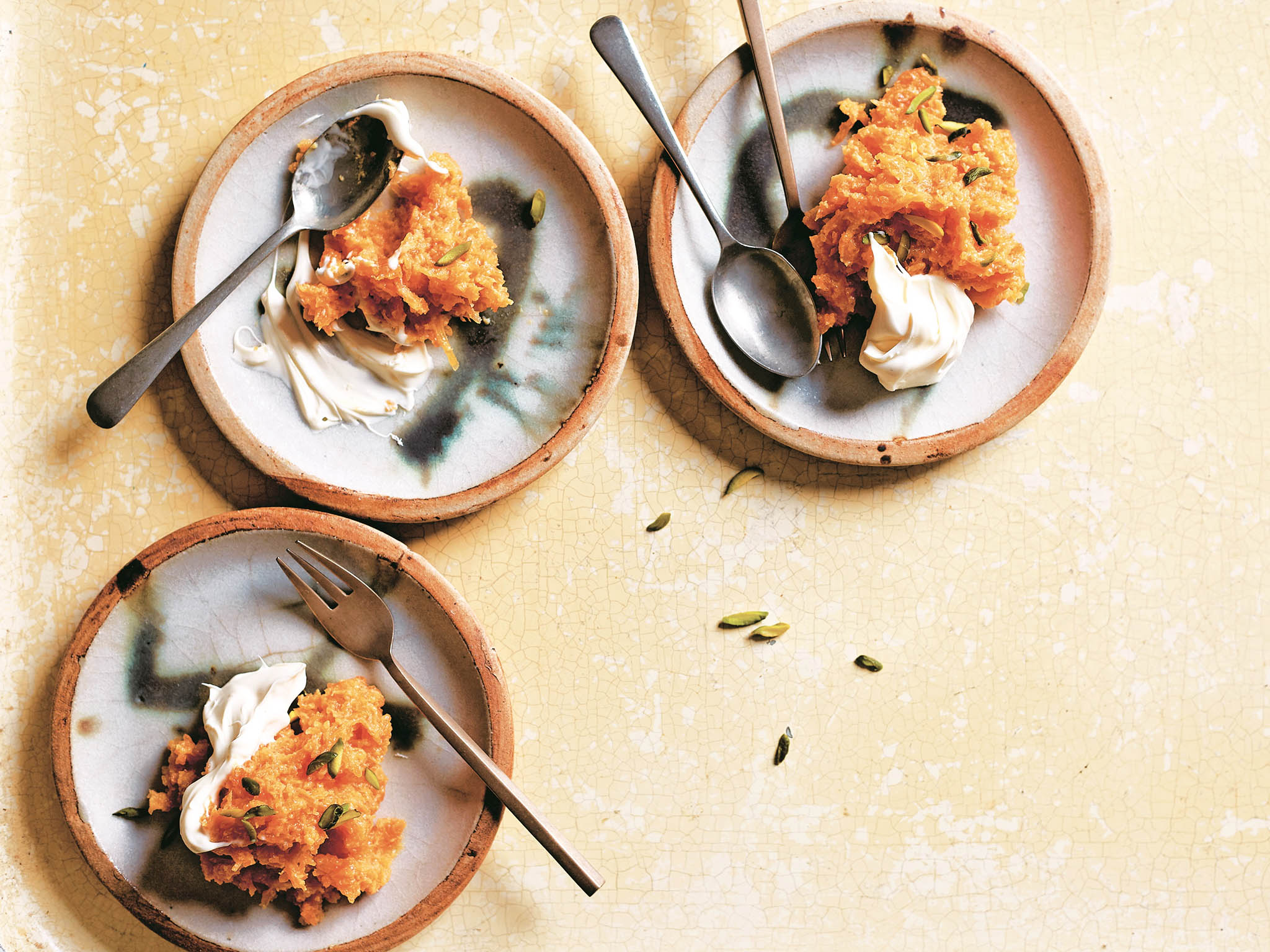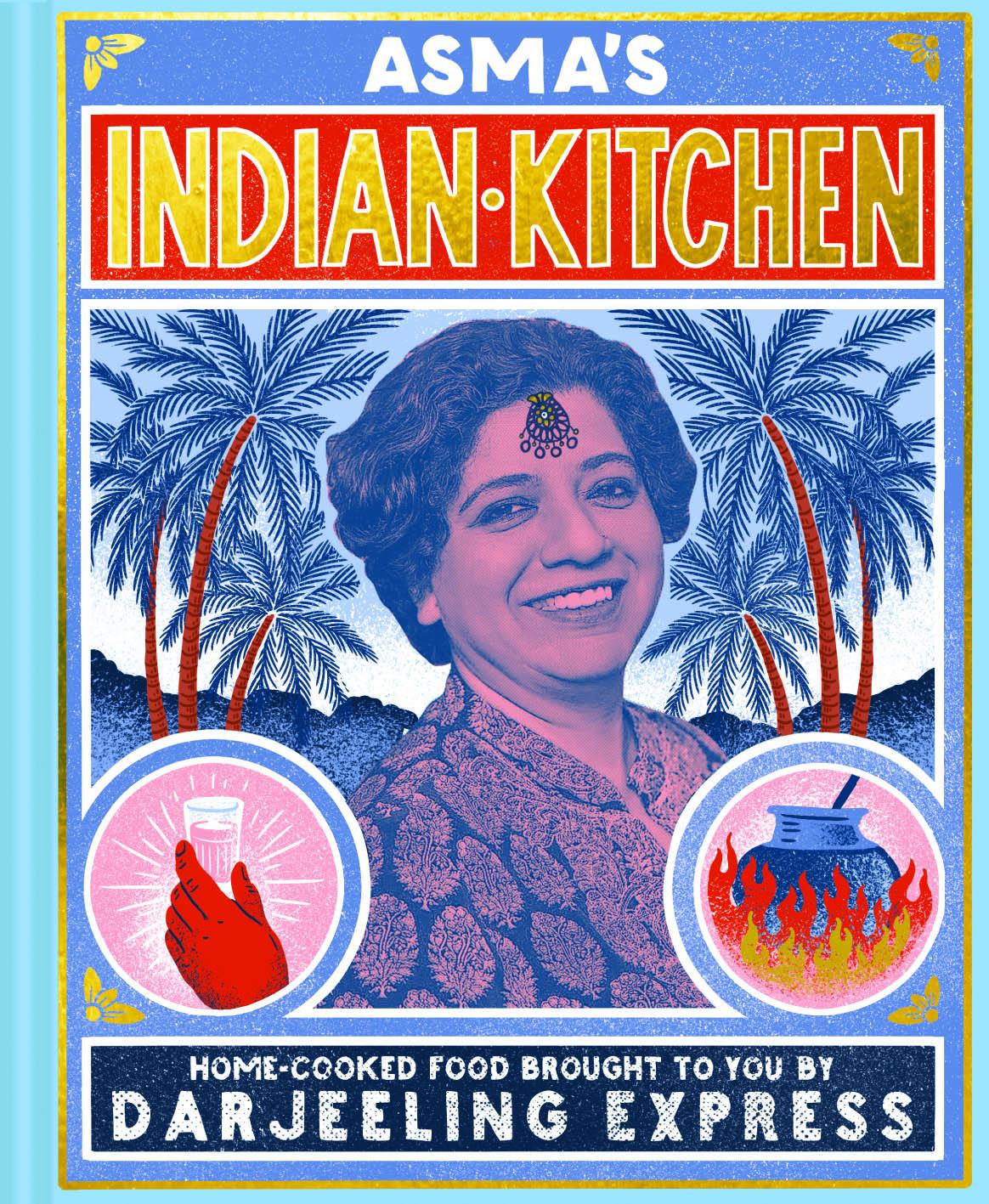Asma Khan's Darjeeling Express recipes: From carrot halwa to masoor dal
Following the route of the Darjeeling Express, Asma Khan’s highly anticipated debut cookbook takes us on a journey to preserve the historical tradition of Mughlai food


Your support helps us to tell the story
From reproductive rights to climate change to Big Tech, The Independent is on the ground when the story is developing. Whether it's investigating the financials of Elon Musk's pro-Trump PAC or producing our latest documentary, 'The A Word', which shines a light on the American women fighting for reproductive rights, we know how important it is to parse out the facts from the messaging.
At such a critical moment in US history, we need reporters on the ground. Your donation allows us to keep sending journalists to speak to both sides of the story.
The Independent is trusted by Americans across the entire political spectrum. And unlike many other quality news outlets, we choose not to lock Americans out of our reporting and analysis with paywalls. We believe quality journalism should be available to everyone, paid for by those who can afford it.
Your support makes all the difference.Gajjar ka halwa – carrot halwa
I associate this dessert with winter. When I was growing up in India, we ate seasonally.
The arrival of the red carrots in winter was always the food highlight for my family, as my father loved gajar ka halwa. With fruits and vegetables being flown in from abroad and the increased use of cold storage all year round, eating with the seasons is no longer the norm in Indian cities and larger towns. This recipe does require time, but serious elbow grease is required only when making the halwa in huge quantities. This is a dish for which you need to have great patience and a killer playlist in the background; this is not a quick dessert!
Serves 4-6
900ml/1½ pints/3½ cups whole milk
500g/1 lb 2 oz carrots, peeled and coarsely grated
3 small green cardamom pods
1 Indian bay leaf
50g/1¾oz/3½ tbsp ghee or unsalted butter
200g/7oz/1 cup granulated sugar
Handful of almond or pistachio slivers, to garnish (optional)
Double (heavy) cream or clotted cream
In a large pan, bring the milk to the boil. Add the grated carrots to the pan and bring the milk back to the boil.
Add the cardamom pods and bay leaf to the pan. Lower the heat to prevent the milk from burning, continue to simmer the milk while stirring at regular intervals to prevent it from catching on the base of the pan.
After approximately 2 hours, when all the milk has been absorbed, add the ghee or butter and the sugar. Continue to stir for a further 20 minutes until the sugar has dissolved and the carrot paste is moist but with no excess liquid left in the pan.
Serve the carrot halwa while still warm. I prefer to bring a large serving bowl to the table and encourage everyone to help themselves, taking as little or as much as their personal sweet tooth dictates! Alongside the halwa, serve bowls of almond or pistachio slivers, to scatter over the halwa, and thick cream, to dollop on the side.

Keema sua pulao – mince with dill pulao
Inspired by the dill pulao made by a friend’s Armenian mother, the addition of this fresh herb lends an unusual flavour within Indian cookery. During the 1930s and 1940s, there was a thriving Armenian community in Calcutta who enjoyed the patronage of the British, but after independence it dwindled in size. Today, there are few Armenian families left in Calcutta. This dish can be made using any kind of mince – beef, lamb, chicken, and even soy. Minced meat cooks quickly so this is a great dish to prepare when you are short of time. The rice can be made in advance, then reheated in a low oven without any fear of the meat disintegrating.
For the keema
2 tbsp oil
2 green cardamom pods
1 piece cassia bark, 1cm/½in long
2 small Indian bay leaves
25g/1oz onions, finely chopped
¼ tbsp garlic paste
½ tbsp fresh ginger paste
500g/1lb 2oz/2½ cups minced (ground) meat (beef, lamb, chicken) or soy
¼ tsp chilli powder (optional)
For the dill pulao
300g/10½oz/1½ cups basmati rice
3 tbsp vegetable oil
2 green cardamom pods
2 whole cloves
1 piece cassia bark, 2.5cm/1in long
1 large Indian bay leaf
1 small-medium white onion (approximately
100g/3½oz), sliced into thin rings
1 small bunch dill, leaves stripped and chopped
Wash the rice in several changes of cold running water until the water runs clear, then place in a bowl and soak for 30 minutes in fresh water.
To make the keema, in a non-stick pan, heat 2 tablespoons of oil over a medium to high heat. Add the cardamom pods, cassia bark and bay leaves to the pan. Immediately add the onions and cook for 1 minute, stirring. Add the garlic and ginger pastes and cook for a further 1 minute.
Add the mince to the pan, breaking up any clumps with the back of a spoon. Add salt to taste. If using chilli powder, add this to the mince. Cook uncovered until all the liquid has evaporated from the mince. Avoid adding any water, but if the mince sticks to the base of the pan, add a splash of water. Once cooked, remove from the heat and set aside.
To make the pulao, in a heavy-based pan that has a lid, heat the oil over a medium-high heat. Add the onion rings and fry until caramelised.
Using a slotted spoon, remove the onions and place on a plate to drain. Spread the onions across the plate so they crisp as they cool. Add the cardamom pods, cloves, cassia bark and bay leaf to the pan. After a few seconds, remove from the pan with a slotted spoon and set aside.
Put the kettle on to boil. Add the rice to the pan and stir for 1 minute to coat in the spice-infused oil. Cover with 600ml/1 pint/2½ cups boiling water from the kettle. Add ½ tsp salt and the cooked mince to the pan. Cook uncovered over a medium-high heat until the water has been absorbed by the rice (about 4 minutes). Cover with the lid, lower the heat and simmer for a further 15-20 minutes. Once cooked, remove the pan from the heat and, using a fork, gently mix the rice and add the dill.
Cover and leave for a few minutes before serving with the onions.

Masoor dal – red lentils
This basic dal recipe can be adapted to your own taste by adding extra ingredients to the lentils, such as handfuls of chopped spinach or chunks of fresh tomato. The tempering is a very important final stage in making dal as so much flavour is contained in that spiced oil, which is poured over the cooked lentils. This recipe makes a generous amount for two people with leftovers that can be reheated in a pan the next day: a smaller quantity of lentils would end up sticking to the base of the pan.
Serves 2
500g/1lb 2oz /2½ cups masoor dal (red lentils)
2 tbsp ghee or oil
3-4 dried red chillis
1 small onion, finely chopped
4 garlic cloves, finely chopped
1½ tsp salt
1 tsp ground turmeric
For the tempering
2 tbsp ghee or oil
2 dried red chillis
½ tsp cumin seeds
1 garlic clove, cut into slivers
4 fresh curry leaves
Wash the lentils in cold running water, then place in a bowl and soak for 30 minutes in fresh cold water. (If you do not have time to soak the lentils, then just wash them before adding to the pan – red lentils cook quickly and so do not need long soaking.)
In a heavy-based pan that has a lid, heat 2 tablespoons of oil or ghee over a medium-high heat. Add the dried red chillis to the pan, followed by the minced onion and garlic. Cook, stirring, until they just start to colour.

Add the soaked lentils to the pan, then the salt and ground turmeric. Add 1.2l/2 pints/10 cups warm water to the lentils and bring to the boil. When the surface of the water is bubbling, cover the pan, lower the heat and simmer gently for 30 minutes. Stir occasionally to ensure the dal is not sticking to the base of the pan. Once the dal is cooked, place it in a bowl and keep warm while preparing the tempering.
In a small frying pan (skillet), heat the remaining 2 tablespoons of ghee or oil over a high heat. Working very quickly so the tempering does not burn, add the dried red chillis, cumin seeds, garlic slivers and, finally, the curry leaves. Cook for a few seconds, then pour the tempering oil and spices over the warm dal in the pan. Next, take a spoonful of the dal and place it in the frying pan to absorb any remaining oil – take care whilst doing this as the oil may splutter – then tip the spoonful of dal from the frying pan back into the main dal pan.
Serve immediately, ladling the dal into separate serving bowls.
‘Asma’s Indian Kitchen: Home-cooked food brought to you by Darjeeling Express’ by Asma Khan, published by Pavilion Books. Photography by Kim Lightbody
Join our commenting forum
Join thought-provoking conversations, follow other Independent readers and see their replies
Comments